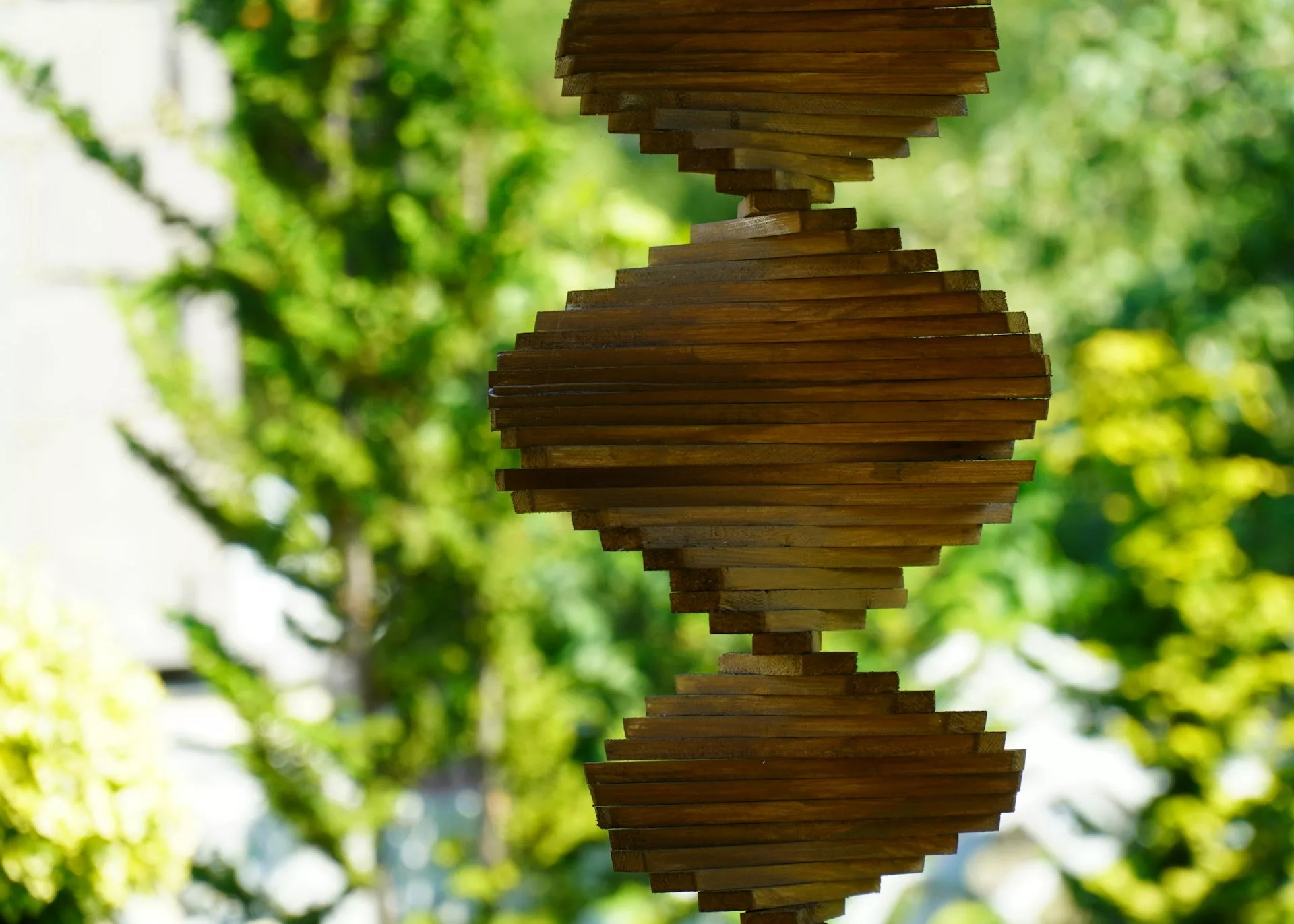Displaying science within art has been done for centuries but recently, using science to make art has become more popular. Photo credit: Karolina Kołodziejczak via Unsplash
What has not been seen until recently is art depicted through science.
The relationship between early science and art extends throughout history. As early as approximately 200BC, physician Hua Tuo had created a chart displaying the anatomy of human organs. Centuries later, this was followed by hundreds of botanical drawings collected during the colonial age. Upon the invention of the microscope, scientists, such as Walter Fleming, could finally draw subjects as small as a cell. Over the centuries, we can find many examples of science being depicted through art. What has not been seen until recently is art depicted through science.
Technologies developed through biochemistry have allowed a modern field to emerge: BioArt. This involves working with bacteria, live tissues, or other organisms and by modifying life processes, art can be produced. Common examples of these include the modification of genomes and growing cell cultures on artificial moulds.
‘Let man have dominion over the fish and the sea, and over the fowl of the air, and over every living thing that moves upon the Earth’ (Genesis 1:26). This phrase, used by Eduardo Kac in Genesis (1998), only 25 years after the first published papers on recombinant DNA, was incorporated into the genome of E.coli bacteria.
Incorporation was achieved via two layers of coding: one coding the original text in Morse code, and the next coding of the Morse code into the bases of the DNA (where a dash was translated into thymine). Specific splicing of this fragment into a plasmid, a DNA construct containing Enhanced Cyan Fluorescent protein, was followed by translation into E.coli cells. Transformation is the process through which DNA is introduced into cells. Enhanced Yellow Fluorescent protein plasmids were also introduced in this cell culture for transformation. The result was the growth of cyan, yellow, and non-fluorescent cells across the medium, spelling the dominion of man into life itself.
The first commentary proves the quote; we do have dominion and can actively choose to exercise this by modifying the genetics of a living being. Even though it is no fish or fowl, E.coli are living creatures all the same. However, nature has mechanisms of pushing back against our will; not all bacteria took up the quote-containing plasmids, and some didn’t take up any artificial plasmids altogether.
…we do have dominion and can actively choose to exercise this by modifying the genetics of a living being…[but] dominion does not always continue.
Despite human intervention, dominion does not always continue. Bacteria can exchange the verse between themselves, occasionally taking up the Yellow Fluorescent protein as well to fluoresce green. Bacteria will occasionally reproduce and exchange plasmids between each other, or asexual reproduction will result in the unequal distribution of plasmids between daughter cells.
The show (1998) did not end there; it was exhibited to the public after the initial recombination. On top of this, there was the option for visitors to expose the bacteria to UV radiation. The exposure induced mutations in the genome, which could occur anywhere, meaning it could potentially pervert the message displayed by the cells. Although we have dominion, the existence of future, random mutations, questions whether we have control. Mutations can be induced but we do not control their frequencies, location of specific base change. We can inflict whatever changes we desire, but the consequences are not ours to decide.
As biochemical techniques evolved, so did the messages that could be conveyed through art. In 2004, a miniscule leather jacket was shown as part of the Tissue Culture and Art Project hosted by SymbioticA. Oron Catts and Ionat Zurr collected mouse epithelial (skin) cells to grown over a a polymer jacket mould. The ‘Victimless Leather’ formed of the skin cells growing on the jacket mould was hung up in a cell culture flask, constantly supplemented with a serum to maintain the cultures.
Like ethical meat grown from bovine cells, the piece of art served to ask whether we could produce other animal products without direct harm to the source animal itself. Unfortunately, this wasn’t truly ‘victimless’- biochemistry has yet to discover a serum to keep cell cultures alive that does not constitute foetal bovine serum, which is produced from animals.
After a year of continual growth, the project was eventually culled by the removal of the serum due to severe overgrowth. Despite the leather being ‘artificial’ in the sense it did not originate from the death of an animal, it still consisted of a living cell- and thus the same empathy was applied to the tissue as should be applied to any other organ. Perhaps as science evolves, art and the mediums used in it can too.
The ‘Victimless Leather’ project brings up the most consistent issue with BioArt: ethics. The art condemns animal products, yet its production still utilises them. The jacket is still ‘killed’. Foetal bovine serum is still used. Even Genesis allows the public to expose colonies of bacteria to radiation, inducing mutations in their genome. Though they are by no means endangered, are bacteria not still life?
The ‘Victimless Leather’ project brings up the most consistent issue with BioArt: ethics.
Outside of these cases, Heath Bunting and Rachel Baker created recombinant weeds that were resistant to Roundup—a common herbicide. Seeds for these weeds would be distributed for free to those interested. The current culture of genetically-modified crop monocultures may provide crops with higher yield and greater resistance to threats, with their resistance to specific herbicides potentially being able to spread to local flora. The aim of this project is to distribute weeds resistant to these herbicides, specifically Roundup, to break up monocultures and generate more biodiverse environments. Although biochemical techniques have allowed the introduction of resistance genes, these weeds could breed with native —or invasive— plants and ruin the livelihoods of farmers. We need to strike a balance between feeding populations and protecting our environment, the question is how well this project balances those problems as it could cause greater harm.
Ethics is not the only issue with BioArt. Due to the nature of the medium, accessibility is a serious problem. To understand the methods, you would need to study them to degree level; to practise these methods, you would need to have the finances for the equipment and access to a laboratory space. Neither of these requirements are truly accessible. The nature of the art itself also makes it difficult— if not impossible—to obtain. Some pieces never make it to exhibition as they are deemed a biohazard, some countries don’t allow the modification of genes, and owning these pieces isn’t feasible for many.
Therefore, biochemistry can focus on displaying new scientific discoveries as art. For instance, Briony Marshall produced ‘DNA Helix of Life’ (2013) by utilising the significant discovery of the structure of DNA. Modelling the Watson and Crick structure, each atom is replaced by a small human figure. The sculpture contains 10 base pairs which correspond to 3 and 1/3 of the first codons on haemoglobin- the first gene to be sequenced. ‘DNA Helix of Life’ is a great testament to the early era of biochemistry and its initial discoveries, and a reminder that each biochemical discovery also discovers new perspectives of ourselves. Here, the sculpture demonstrates the science of DNA being displayed through art.
In times when we see government support pulled away from creative subjects, it is even more important to recognise the strong relationship between science and the arts. Biochemistry has supplied artists with more mediums through which they can express their messages— and art has allowed biochemical discoveries to be acknowledged by its viewers.





